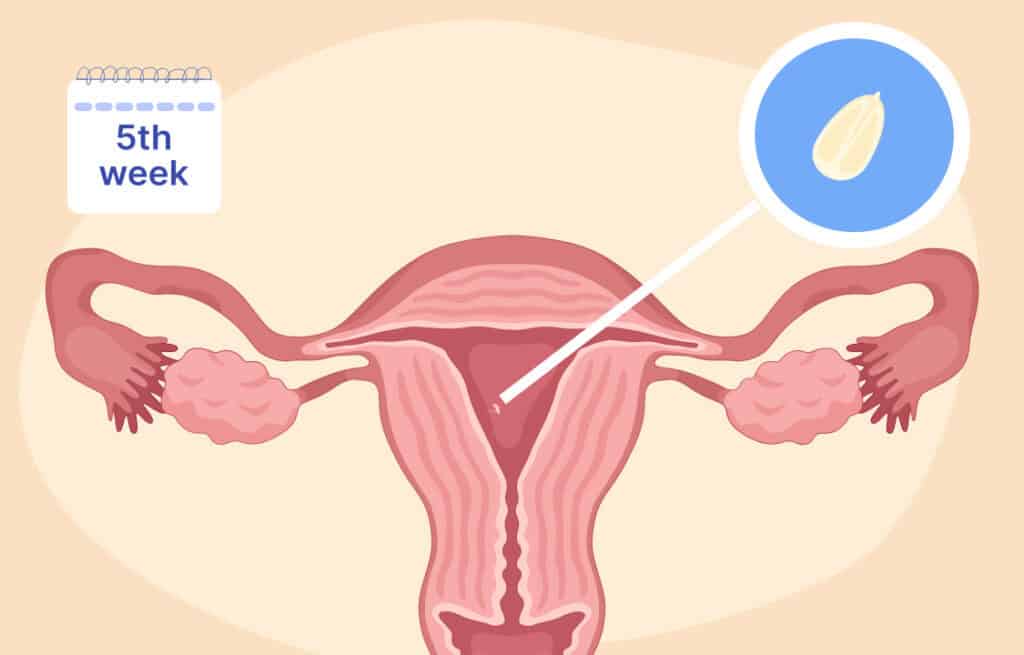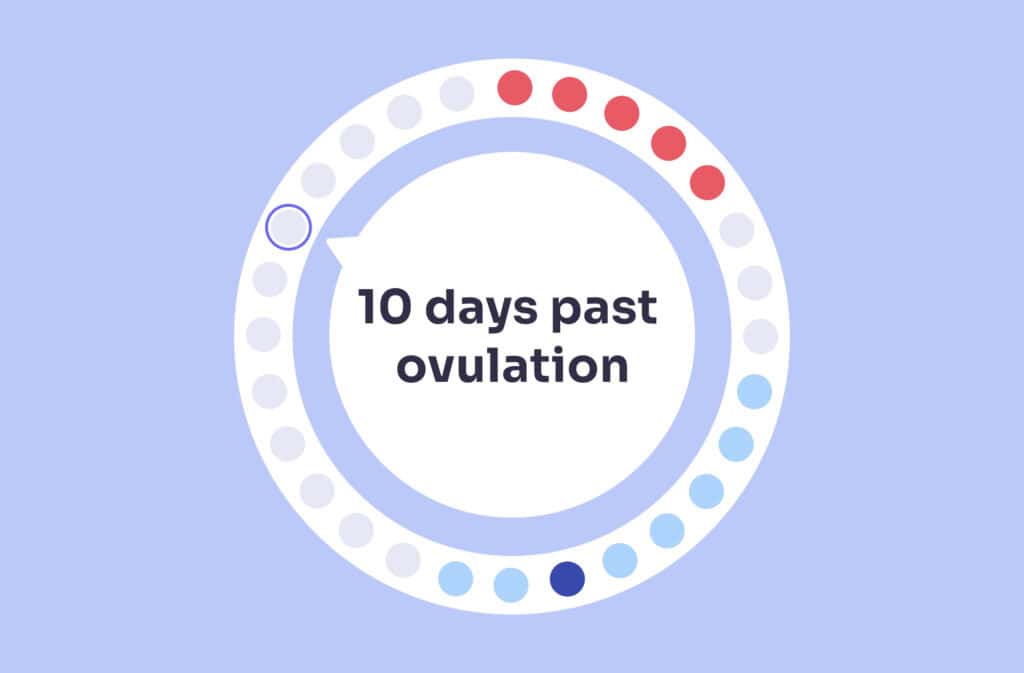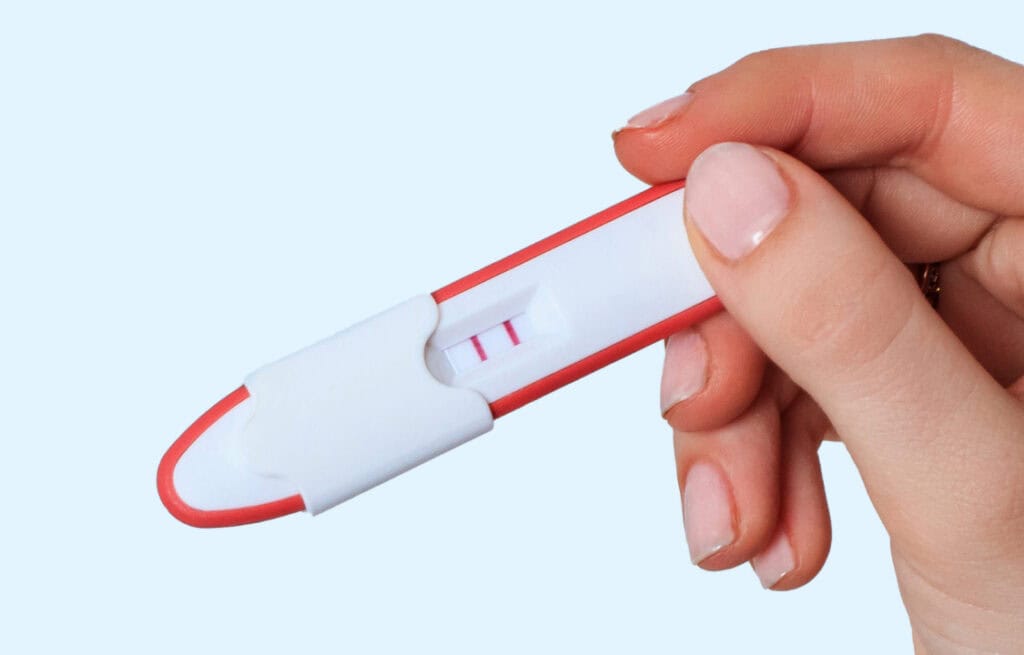Femia > Health Library > Pregnancy > Pregnancy week by week > 5 Weeks pregnant: A sneak peek into early baby development and symptoms
5 Weeks pregnant: A sneak peek into early baby development and symptoms

- Updated Feb 11, 2025
- Published
CRAFTED BY HUMAN
Crafted by human At Femia, we provide accurate and up-to-date information at every stage of your journey, from trying to conceive, pregnancy and postnatal support. All content is created by a real person based on in-depth research and own professional experience. Femia ensures that you will receive expert advice, strict accuracy and a personalized approach from our authors/medical experts. Learn more about our editorial policy.
FACT CHECKED
Fact checked At Femia Health, we maintain the highest standards of editorial excellence in delivering content focused on helping you conceive, guiding you through pregnancy, and supporting you postpartum. Explore our content review principles to learn how we ensure the accuracy and quality of our health and lifestyle tips for every stage of your journey.
At 5 weeks pregnant, symptoms like nausea, fatigue, and breast tenderness may become more noticeable. The embryo is rapidly developing, and an ultrasound at this stage may reveal the gestational sac, the yolk sac, and often the embryo itself. In some cases, early cardiac activity (a heartbeat) can also be detected, though this is more reliably observed closer to 6 weeks. Folic acid continues to be essential, supporting the early development of the neural tube.
At 5 weeks pregnant, you’re entering a critical phase of early pregnancy where many changes are beginning to happen. For many, week 5 is the first week of noticeable pregnancy symptoms, as hormone levels continue to rise to support the embryo’s growth. This week, rapid cell development is underway, with major foundations forming for your baby’s organs. Understanding what’s happening during week 5 can help you prepare for the changes in your body and set a foundation for a healthy pregnancy journey.
Femia decodes your body’s signals and helps you track progress effortlessly
5-week pregnancy symptoms
Week 5 of pregnancy may bring more noticeable symptoms due to increased hormone levels, particularly hCG and progesterone. However, it’s important to remember that every pregnancy is unique, and the presence, absence, or intensity of symptoms can vary among different women.
Common symptoms include:
- Nausea and morning sickness: Morning sickness can begin around this time. Some may experience mild to severe nausea that persists throughout the day, while others might not feel nauseous at all.
- Fatigue: Elevated progesterone levels can cause increased tiredness. You might find yourself needing more rest as your body adjusts, but some may not notice significant changes in energy levels.
- Breast tenderness and swelling: Hormonal changes often make breasts feel fuller, tender, and sensitive to touch. This symptom can vary in degree or may not be present for everyone.
- Mood swings: The rise in hormone levels can lead to mood swings, making emotions feel more intense than usual. Emotional experiences can differ widely among individuals.
- Frequent urination: Increased blood flow to the kidneys and hormonal shifts may cause a more frequent need to urinate, though not everyone will notice this symptom at this stage.
At 5 weeks of pregnancy, when symptoms such as nausea and fatigue become more pronounced, a pregnancy app can help you keep track of your symptoms. Remember, it’s perfectly normal for symptoms to vary. If you have concerns about how you’re feeling, consider reaching out to a healthcare provider for personalized advice.
👉Find out more: 4 Weeks pregnant: Symptoms, fetal size, and health tips
Your body at 5 weeks pregnant
Your body is working hard to create a supportive environment for the embryo. Hormone levels are increasing, which helps maintain the uterine lining and protect the developing embryo. Physically, you may feel a little bloated, and symptoms like nausea and breast tenderness may be more noticeable as hormone levels rise.
5-week pregnant belly
At 5 weeks, a baby bump isn’t yet visible, though some bloating may make your belly feel fuller. This bloating is due to hormone-induced fluid retention and will vary from person to person.
Baby development at 5 weeks pregnancy
By week 5, the embryo is growing rapidly, and critical systems are starting to form. The embryo is now developing the neural tube, which will later become the brain and spinal cord. Tiny buds are also beginning to appear, marking the early stages of what will become arms and legs.
5-week fetus size
At this stage, the embryo is about the size of a sesame seed or apple seed, measuring around 1-2 millimeters. Although tiny, it’s growing quickly as cells continue to multiply and form essential structures.
5-week ultrasound
At 5 weeks pregnant, an ultrasound can reveal significant early developmental milestones. In addition to the gestational sac—which appears as a small black space within the uterus—the yolk sac may also be visible. The yolk sac provides essential nutrients to the embryo and is an important indicator of early embryonic development.
Thanks to advances in medical technology, it’s sometimes possible to detect the embryo itself and even observe early cardiac activity (a heartbeat) at this stage, although detecting the heartbeat is more commonly achievable closer to 6 weeks. An ultrasound now can confirm the location of the pregnancy, estimate gestational age, and provide valuable information about early development. Some healthcare providers may still suggest waiting until 6-8 weeks for a more detailed ultrasound, as clarity and visibility improve as the pregnancy progresses.
5-week progesterone levels in early pregnancy
Progesterone plays a critical role in maintaining pregnancy by supporting the uterine lining. Levels can vary significantly, but in early pregnancy, they generally range from 11 to 44 ng/mL. These levels will continue to increase as the pregnancy progresses.
👉Find out more:
6 Weeks pregnant: Key changes, health tips, and baby growth
Tiny heartbeats and big changes: What to expect at 7 weeks pregnant
Health tips and self-care at 5 weeks pregnant
- Continue taking prenatal vitamins with folic acid: Folic acid remains essential at this stage to support neural tube development and reduce the risk of birth defects.
- Stay hydrated and rested: Fatigue is common, so prioritizing rest and staying hydrated can help you feel more comfortable.
- Maintain a balanced diet: Eating small, nutrient-rich meals can help manage nausea and support your body’s energy needs.
Femia decodes your body’s signals and helps you track progress effortlessly
Questions from the Femia community
How long should I continue taking folic acid?
It’s recommended to take folic acid throughout the first trimester, and many healthcare providers advise continuing it for the duration of pregnancy.
Can I find out my baby’s gender at 5 weeks?
Not yet; the baby’s gender will be visible through an ultrasound around weeks 18-20, though early genetic tests are available by week 10.
When will my nausea start to ease up?
Morning sickness often peaks around weeks 6-8 and may improve by the end of the first trimester, though this varies by individual.
What can I do to reduce fatigue during week 5?
Rest as much as possible, stay hydrated, and incorporate light, nutrient-rich snacks to maintain energy levels.
The bottom line
At 5 weeks pregnant, early symptoms may intensify as your body adjusts to support the developing embryo. While there’s no visible bump yet, rapid growth is underway inside. Focusing on nutrition, hydration, and rest can help you manage symptoms and support a healthy start to pregnancy.
References
- “5 Weeks Pregnant: Symptoms & What to Expect.” NHS, www.nhs.uk/start-for-life/pregnancy/week-by-week-guide-to-pregnancy/1st-trimester/week-5/.
- “Week 5 of Pregnancy: Symptoms and Baby Development.” What to Expect, www.whattoexpect.com/pregnancy/week-by-week/week-5.aspx.
- “Progesterone Levels by Week During Pregnancy.” Inito, blog.inito.com/progesterone-levels-by-week-during-pregnancy/#:~=In%20the%20first%20trimester%20(until,first%204%20weeks%20of%20pregnancy.
- “5 Weeks Pregnant: Symptoms, Baby Size & Tips.” BabyCenter, www.babycenter.com/pregnancy/week-by-week/5-weeks-pregnant.
- “Pregnancy Week 5.” American Pregnancy Association, www.americanpregnancy.org/healthy-pregnancy/week-by-week/5-weeks-pregnant/.
- “5 Weeks Pregnant.” KidsHealth, www.kidshealth.org/en/parents/week5.html.

Wondering if pregnant women can eat tuna? Learn about the safety of canned tuna, recommended portions, and what types of tuna to eat during pregnancy.

Explore the early symptoms at 10 days past ovulation (10 DPO), body changes and find out when to take a pregnancy test for the most accurate results. Expert advice from Femia.

If I’m still having periods at 55, can I get pregnant? A perimenopause pregnancy is still possible, but much more complex than earlier in life.

